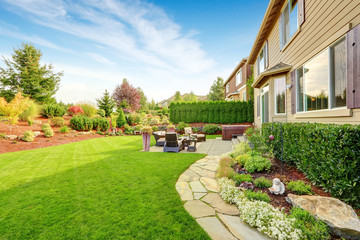Drainage Systems
The purpose of drainage systems is to prevent flooding and drainage of water from a body of water. Some drainage systems are designed to facilitate the agricultural production of crops, while others are designed to protect the environment. Drainage systems combine stormwater control, erosion control, and water table control.

French drains help alleviate groundwater pressure and redirect excess water away from your home or business. They’re also handy if you don’t have access to city water. However, they can be tricky to install if you’re not familiar with their function. A French drain is a perforated pipe placed in the ground. The pipe is then covered with gravel. Water then flows from the pipe into a catch basin to be cleaned out.
A French drain will work best when positioned in a well-drained area. For this reason, you’ll want to consider your property’s drainage problems before installing one. Choosing the wrong spot can result in pooling, which can lead to major issues. While the benefits of a French drain may be obvious, many homeowners make some basic mistakes when it comes to the installation process. These common errors can cost you a lot of money and time. The most effective way to go about it is to hire a professional. This will save you both time and headaches.
Swale drains are shallow drainage systems which can be used to control stormwater runoff. They are used in both residential and commercial settings. They provide a natural and subtle way to drain your yard. A swale can look like a dry stream bed or an open ditch, but it is also often lined with boulders or plants to soften its appearance. Swales are designed to control water runoff, prevent puddling, and help avoid flooding. Their shallow profile allows them to filter water into the soil gradually. It is a less intrusive drainage system than trench drains, and it can be incorporated into landscaping as well.
Swales can be used to reduce peak runoff rates by between 4% and 87%. They are a part of stormwater treatment trains. They are particularly effective for areas with gently sloped land. In addition, they can be illuminated for nighttime visibility. Water quality swales are sized according to the computed Treatment Volume and the amount of storage provided within the swale media. The swale bottom must be scarified at least 12 inches deep.
Floodplains and levees in drainage systems are important ecological and hydrologic features. Floodplains provide habitat for many species and play a vital role in water quality. However, they can be a danger to people, especially in areas where a flood is expected to occur. Levees are man-made structures constructed to divert a river’s path. They are made from earth materials and are used to control floods. Generally, they are built along low rivers.
Several countries use different terms to define what is a natural floodplain and what is an administrative floodplain. A regulated floodplain is one that hydrologic and hydraulic models have defined. It is a defined area that has a minimum frequency of 100-year floods. Changing flood patterns is an increasing problem as a result of climate change. The increased frequency of extreme events suggests that flood management must be redesigned. Currently, many structural measures are not easily adaptable to changing flooding regimes.
Retention ponds and dams are structures used to collect and store storm water runoff. These structures are important for flood control and pollution prevention. They reduce peak runoff rates and increase the stability of downstream channels. These features are also used in agriculture, business parks, and neighborhoods. When properly constructed, retention ponds can provide natural and aesthetic benefits. However, improperly designed retention ponds can have negative effects on the environment.
Retention ponds are used to store stormwater runoff until it can naturally process the water. They help protect the groundwater and prevent contaminants from reaching the waterway. Modern retention ponds have combined aesthetics and water treatment, making them a valuable asset for urban areas. They are also ideal for managing stormwater runoff. In order to create a retention pond, you need to consider the area’s climate and the amount of rainfall. They require a substantial amount of land to build. If you don’t have sufficient land, you can set aside a vacant lot to hold the pond’s overflow.

